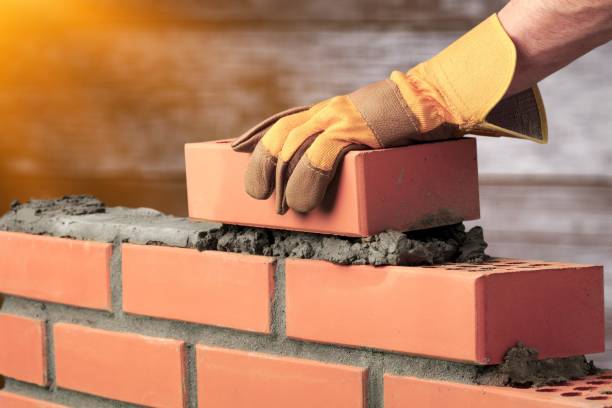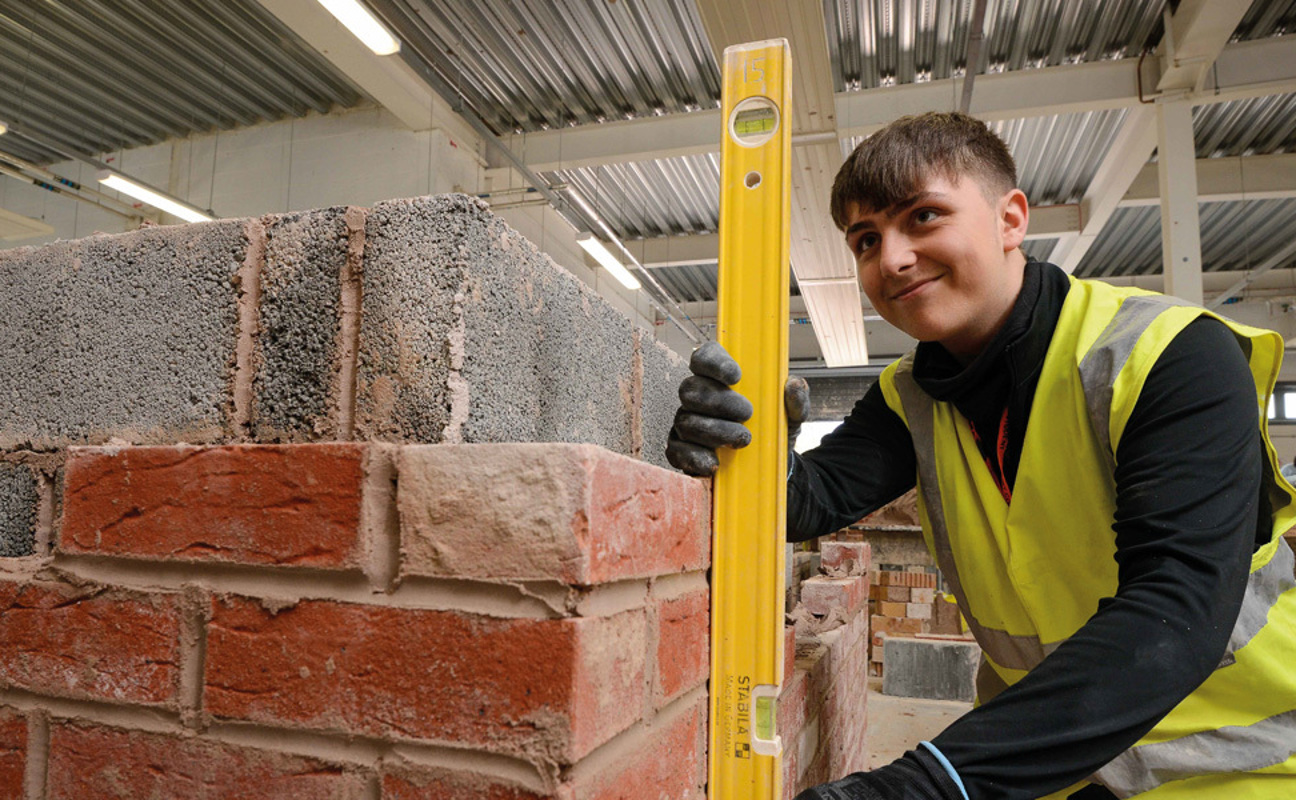Little Known Questions About Bricklayer Auckland.
4 Simple Techniques For Bricklayer Auckland
Table of ContentsAbout Bricklayer AucklandThe Main Principles Of Bricklayer Auckland The Single Strategy To Use For Bricklayer AucklandWhat Does Bricklayer Auckland Mean?Unknown Facts About Bricklayer AucklandThe Single Strategy To Use For Bricklayer Auckland
Bricks should constantly be stacked on slabs; never ever pile them straight on uneven or soft ground. Do not store blocks on scaffolds or runways.Other than where piled in sheds, block stacks must never be greater than 7 feet high. When a heap of brick gets to an elevation of 4 feet, it has to be tapered back 1 inch in every foot of height over the 4-foot level. The tops of block heaps should be kept level, and also the taper must be preserved during unpiling operations.
Architectural bond refers to exactly how the specific stonework devices interlock or tie with each other into a solitary structural system. Utilizing cement to adhere surrounding wythes of stonework.
Bricklayer Auckland Fundamentals Explained
Pattern bond refers to the pattern developed by the stonework devices as well as mortar joints on the face of a wall surface (Bricklayer Auckland). The pattern may arise from the architectural bond, or it may be purely ornamental as well as unassociated to the structural bond. Figure 4-4 shows the 6 fundamental pattern bonds in common use today.
The running bond is the most basic of the six patterns, containing all stretchers. Because the bond has no headers, steel ties typically create the architectural bond. The running bond is utilized mostly in tooth cavity wall surface building, block veneer walls, as well as facing tile wall surfaces made with additional wide stretcher tile.
Great blocks should not break down when positioned in water. Only when fat lime or clay mortar is utilized or when one is compelled to make use of blocks that are not well burnt, this saturating policy has to be kicked back.
The 3-Minute Rule for Bricklayer Auckland
In all situations, blocks must not be dealt with in baskets or in any type of other mode which will certainly ruin the intensity of their edges. A layer of mortar is spread to cover the full width of the wall for a suitable length of the lower training course.
Ultimately, we push the side protruding mortar in strongly to be level with the face of the wall surface if it is to be left unplastered. In the common method adopted by numerous masons, a row of bricks is very first positioned on a slim layer of bed mortar leaving the cross joints vacant.


The wall surfaces are elevated really plumb. All programs are laid really horizontal and all vertical joints truly vertical.
All about Bricklayer Auckland
For this purpose, a wood straight edge with college graduation offering a density of each brick program including joint can be made use of for support. For a thick wall surface, the above procedure is duplicated together with both faces of the wall surface and also the indoor filling up blocks for the thick wall surface are laid in a similar way.
This operation of loading open joints is described flushing-up. It is wrongly left out for several training courses on some badly-executed work and just done after that (not after every course) in an ineffective way. It is not a good technique as well as needs to be stayed clear of as it is necessary that every course must be flushed approximately the level if great job is needed.

8 Simple Techniques For Bricklayer Auckland
The mortar rising and loading the vertical joints entirely as well as develops an exceptionally solid as well as solid wall. This is called larrying. For a rat trap bond job (as in the building and construction of dental caries wall surfaces), if the mortar is put carelessly on the brick, a few of it will fall under the dental caries and also will certainly be squandered.
The face of the brickwork will also be cleaned up of all mortar droppings, etc(ii) When situations provide it essential to bring on a part of a building in i loved this uneven courses, the job will be constructed back (according to the bond utilized on the work) at an angle not steeper than 45 degrees so regarding guarantee an attire and also reliable bonding.
Otherwise, for faces to be smudged, ending up of the face joints need to be accomplished as talked about in below (This is very crucial.)(iv) The walls must be consistently raised all over not leaving any part one metre (three feet) less than the other - Bricklayer Auckland. A day's work need to not be more than 1.
3 Easy Facts About Bricklayer Auckland Shown
When the facework is to be later plastered or the joints alone are to be pointed, the joints need to be raked while the wall is being developed. Bricklayer Auckland. It needs to be raked to a minimal deepness of 12 mm by a raking tool during the progress of the work itself, when the mortar is still green.
If smudging or aiming is not imagined, the joints need to be struck flush and also finished at the time of laying itself, as already stated. Half-brick walls tend to crack unless treatment is taken in its building and construction. Brickwork in half-brick stonework is to be executed with stretchers in 1: 5 mortar.